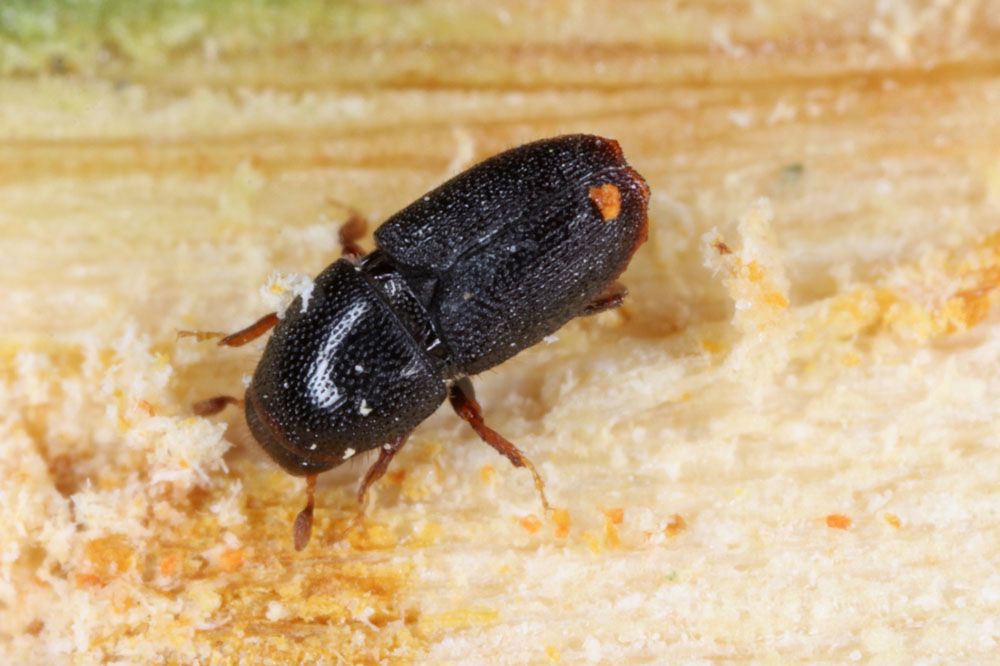
Shothole Borer – Scolytus rugulosus
Shothole Borer (Scolytus rugulosus)
Latin Name: Scolytus rugulosus
Common Name: Shothole Borer
Appearance:
- The egg is oval or spherical with a bright, pearly white tint.
- The larva is whitish, has no legs, and measures approximately 1/6 inch (4 mm) long. Just beneath the skull, the body is somewhat expanded.
- The pupa is whitish with scant hairs and many thick tubercles. It measures around 1/6 inch (4 mm) in length.
- The mature beetle measures around 1/12 inch (2 mm) in length. It features brownish-black legs and antennae and a small, stubby snout with biting mouthparts. The thorax is gleaming and lengthy. The wing coverings are dingy, and the interstices (the spaces between body pieces) are wrinkled.
